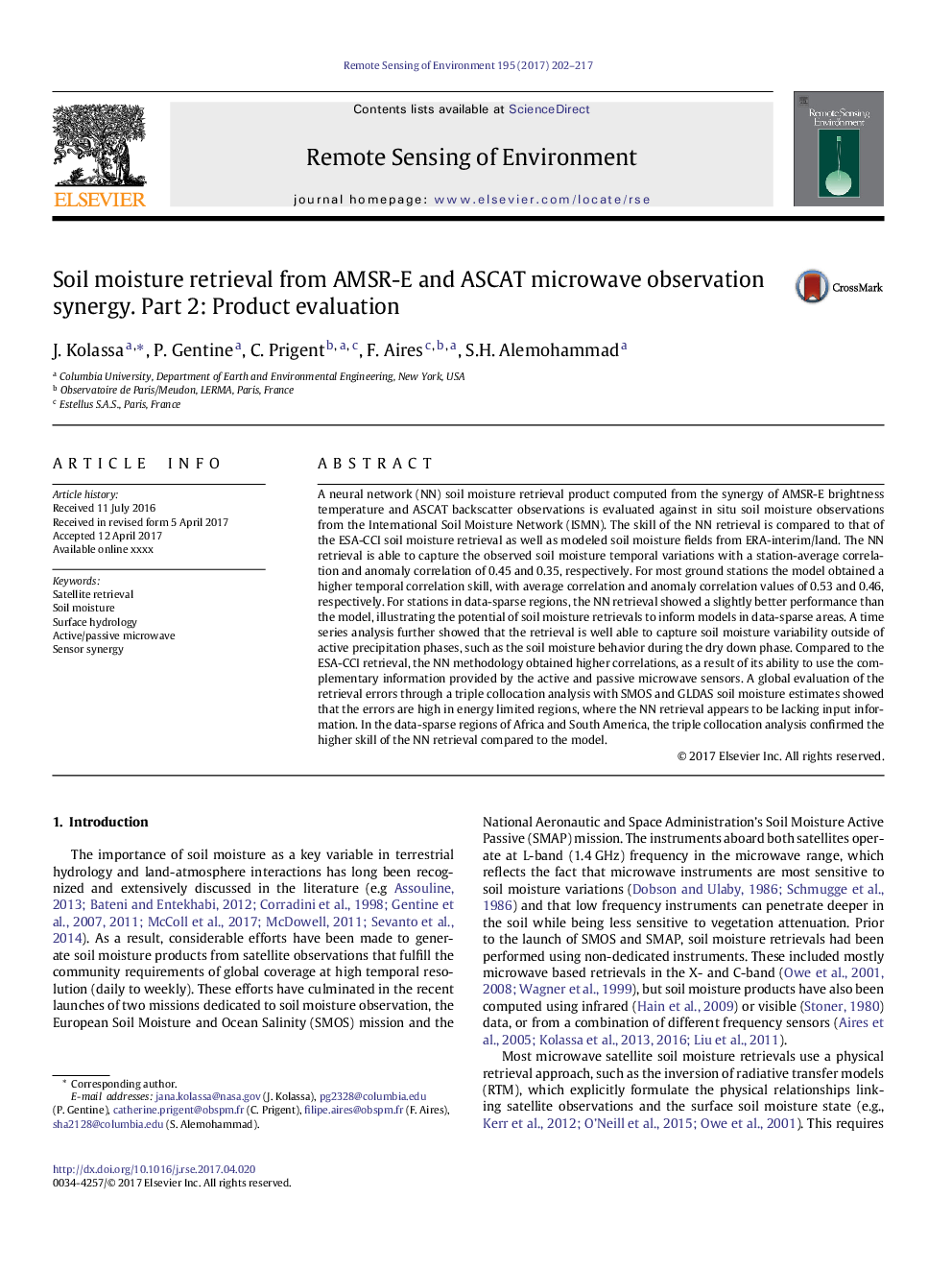| Article ID | Journal | Published Year | Pages | File Type |
|---|---|---|---|---|
| 5754816 | Remote Sensing of Environment | 2017 | 16 Pages |
Abstract
A neural network (NN) soil moisture retrieval product computed from the synergy of AMSR-E brightness temperature and ASCAT backscatter observations is evaluated against in situ soil moisture observations from the International Soil Moisture Network (ISMN). The skill of the NN retrieval is compared to that of the ESA-CCI soil moisture retrieval as well as modeled soil moisture fields from ERA-interim/land. The NN retrieval is able to capture the observed soil moisture temporal variations with a station-average correlation and anomaly correlation of 0.45 and 0.35, respectively. For most ground stations the model obtained a higher temporal correlation skill, with average correlation and anomaly correlation values of 0.53 and 0.46, respectively. For stations in data-sparse regions, the NN retrieval showed a slightly better performance than the model, illustrating the potential of soil moisture retrievals to inform models in data-sparse areas. A time series analysis further showed that the retrieval is well able to capture soil moisture variability outside of active precipitation phases, such as the soil moisture behavior during the dry down phase. Compared to the ESA-CCI retrieval, the NN methodology obtained higher correlations, as a result of its ability to use the complementary information provided by the active and passive microwave sensors. A global evaluation of the retrieval errors through a triple collocation analysis with SMOS and GLDAS soil moisture estimates showed that the errors are high in energy limited regions, where the NN retrieval appears to be lacking input information. In the data-sparse regions of Africa and South America, the triple collocation analysis confirmed the higher skill of the NN retrieval compared to the model.
Related Topics
Physical Sciences and Engineering
Earth and Planetary Sciences
Computers in Earth Sciences
Authors
J. Kolassa, P. Gentine, C. Prigent, F. Aires, S.H. Alemohammad,
